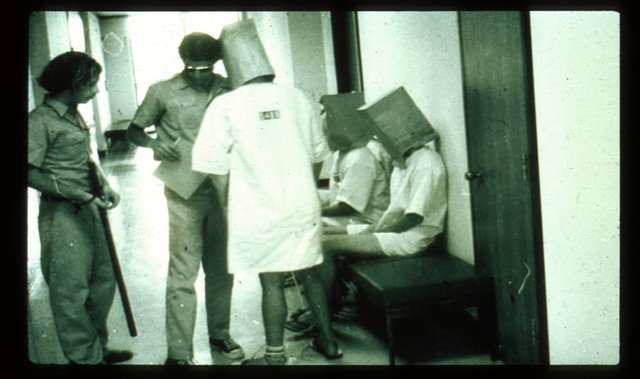Inside The Stanford Prison Experiment That Revealed The Darkest Depths Of Human Psychology
By Richard Stockton on October 17, 2017
How perhaps the most disturbing experiment ever devised turned regular people into monsters.

Prisoners with bags forced over their heads await their “parole hearing,” their release from the experiment upon its conclusion.
In October 2004, U.S. Army Staff Sergeant Ivan “Chip” Frederick was facing some hard time. He had been one of the accused in the notorious torture scandal that erupted in March of that year from Iraq’s Abu Ghraib prison, and his court-martial saw disturbing details aired about prisoner abuse, sleep deprivation, and sexual humiliation.
One of the witnesses that Frederick called to defend him — and arguably one of the reasons he only got eight years for his crimes — was Stanford psychologist Philip Zimbardo, who argued that Frederick’s actions weren’t necessarily a reflection on his character, but were instead a reaction to the environment that the higher-ups had allowed to develop in Abu Ghraib.
Zimbardo explained that, given the right set of circumstances, almost anyone could be induced to do some of the things of which Frederick stood accused: beat naked prisoners, defile their religious items, and force them to masturbate with hoods over their heads.
If this post is informative for you then vote for it please.

@ssmm1582
